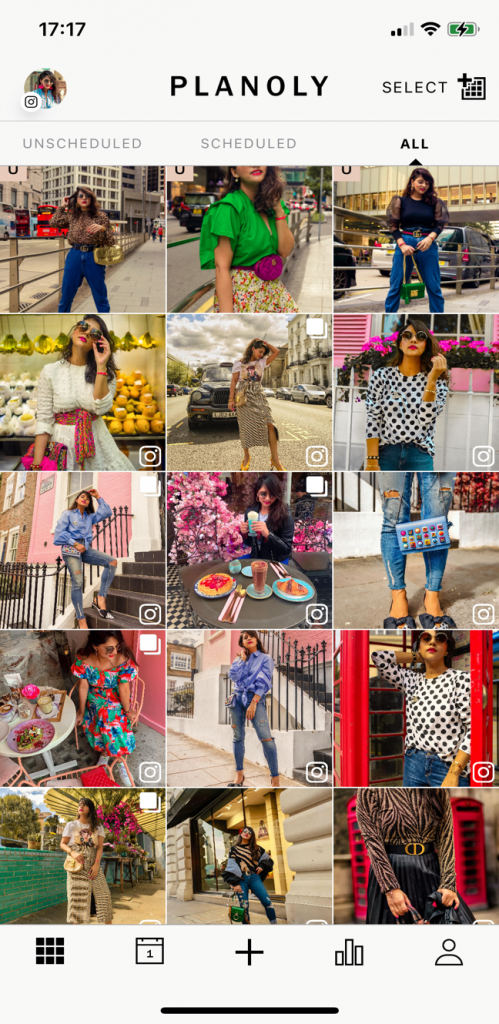Sarah Atiq (Class of 2021)
What is Influencer Marketing: Marketing’s Next Big Trend


HKU MBA Knowledge Exchange Article
Traditionally, influencer marketing was limited to celebrities and a few well-known bloggers. Now, we have seen social media influencers rise and commonly been seen everywhere. Influencer marketing has become one of the most critical marketing strategies. HKU MBA meets with Sarah Atiq, a full-time MBA student of Class 2021, to share her experiences and insights about influencer marketing.

HKU MBA: You have over 48K subscribers on your social media channels. How did you start your influencer journey?
Sarah Atiq: I began my Instagram journey and blog around five years ago in 2016. As surprising as it may sound, it was a journey that resulted from months of encouragement and persuasions from my family and friends. So when I first began my Instagram, it was initially just an outlet for me to express my creativity and explore my love for fashion. The platform allowed me to step away from my full-time role as a mother of two beautiful children and to begin a journey towards a career which I truly loved. At first, I simply started by sharing styling posts, giving shopping advice and sharing outfit tips with my followers. I was pleasantly surprised to receive the positive engagement and feedback. This pushed me to develop my blog and to create a platform where I could share my thoughts and give styling advice to my followers.
A year into my Instagram journey, I had gained a significant following (since the algorithm used to be much kinder to influencers at the time) and I began working with different Singaporean brands and magazines. For me, it was integral to work with brands that genuinely fit my style and aesthetic instead of just choosing to work with any available brand opportunities. By doing so, I was able to remain true to myself and my followers, because I ensured that I would only introduce them to brands and products that I truly loved myself. At the same time, I was fortunate enough to develop relationships with brands and grow my business through word of mouth and recommendations from clients.
While being an influencer on Instagram sounds exciting and a lot of fun, I always like to share with others that it is not the easiest of jobs since one is required to continually develop their brand name and their content whilst managing their relationships and projects with several brands. It is also a job that requires one to be extremely positive, motivated and a self-starter while being able to differentiate yourself from others. Most days, the bulk of my work was done at night post 8pm till 2am since it was the quietest time at home and I was able to dedicate time to content creation, editing, posting on Instagram and writing articles. Some of my favourite apps, which I always recommend for content creation, are Lightroom (which I use to edit my photos) and Planoly (which allows you to plan your feed for weeks).

Being an influencer requires one to dedicate themselves to the job 24/7. The one thing that always encouraged me to continue to develop my brand were the messages and emails from my followers. I would regularly get asked styling and shopping advice and it felt amazing to know that I was able to give women the confidence to be comfortable in themselves whilst trying out new trends.
HKU MBA: Being an influencer yourself, what do you think is the best influencer marketing strategy?
Sarah Atiq: In the last ten years, we have seen the development of influencer marketing become crucial for brands to grow and increase their awareness globally. The influencer market is estimated to grow at a CAGR of 32.4% from 2019 to 2024. Furthermore, brands are estimated to spend $US15 billion on influencer marketing in 2022, according to Mediakix. I believe influencer marketing is much more personalised than traditional marketing methods. It allows the brand to come closer to customers and enables them to connect with the brand through a friendly face they can trust. However, whilst there are many positives, we also see that brands fail when they are unable to align their goals with the influencer. I believe the best influencer marketing strategy is when both the brand and the influencer have aligned goals. This allows them to create an authentic voice in terms of the following size since it’s often the micro-influencers (10-100k followers) who can offer better engagement statistics. They can do so due to their niche market following and that they can develop authentic relationships with their followers.
In my opinion, the best strategy for influencer marketing would be collaborative for both the brands and the influencers. It would be a relationship which aligns both of their goals for the product/service being promoted. It would require the brand to give the influencer autonomy to be creative while paying them appropriately. At the same time, the influencer would be required to create authentic content which resonates with their audience. However, there are some drawbacks for the brand to work with micro-influencers, one of them is that if they focus on this strategy, they may end up managing relationships with several influencers at once. Since each micro-influencer offers the brand access to different niches in the market, solely focusing on one would not be enough. To mitigate this, the brands should have a dedicated influencer marketing team which can develop, foster and manage these relationships for the brand.

HKU MBA: Working with the wrong influencers can do more harm than good. What are some challenges of influencer marketing from a corporate’s perspective?
Sarah Atiq: I agree that working with the wrong influencer can affect a brands image negatively; hence it comes with several challenges. Identifying the correct influencers to work on your campaigns is one of the biggest challenges. Since many influencers can purchase followers and illustrate a large following, a brand must ensure they have an authentic following and check their engagement rates. Moreover, it’s integral to ensure that the audience of the influencer matches the target audience of the brand. If not, we would see a dissonance between the content created and the audience the brand was targeting, and this would result in negative ROI. Thus it’s critical for the brand to align their goals with the influencer and to develop a long-term relationship which is beneficial for both parties.
Another challenge that brands face is if they are unable to measure the ROI of their influencer marketing campaign. A brand can solve this problem by using Big Data (I learned a lot regarding this from my elective this semester, Big Data Consumer Analytics). The importance of Big Data for a brand is crucial to determine the effectiveness of their marketing campaigns. A brand needs to optimise their campaign by identifying their target audience, find the right influencers to match their audience and set realistic campaign goals. To measure the campaign results they need to analyse both the influencers engagement data and the performance of their posts by tracking campaign KPIs. Some critical KPIs would be click-through rates, the number of new visitors, reach & impressions, engagement rate, authentic follower growth and the number of conversions. Most social media platforms already have built-in analytics tools to track essential metrics. However, there are more advanced platforms which can be used to access these detailed social media insights. This will allow the brand to identify the appropriate influencers to work with, and hence reward the influencers that bring in the most value to the brand. This would motivate both parties to work together effectively towards an aligned goal.

HKU MBA: What is your outlook of the future of influencer marketing?
Sarah Atiq: I believe going forward the importance of influencer marketing will be stronger than ever, and it will be critical to a brands successful digital marketing strategy. 2020 has been a challenging year for brands and retail in general. Thus, digital marketing and e-commerce are both crucial in the current COVID-19 era. Not only will consumers be spending more time at home but they will be spending more time on their mobile phones.
This creates a whole new world of opportunities for brands to leverage. Brands need to continue to push collaborations with influencers, which can reach their target audiences while staying at home. In current times, consumers don’t necessarily want to see celebrities or models promoting a brand, but instead would resonate with an influencer that makes a personal connection with them or their circumstances. Moreover, the use of live content will be even more popular on social media platforms because, again, this makes the influencer feel more real because of the realistic storytelling.
However, as I have mentioned before, it’s integral for brands to work with authentic influencers. At the same time, they need to continue to use Big Data to finetune their campaigns to achieve the highest ROI and campaign results. So I believe in current times, investing in influencer marketing would be the best strategy for brands. Since it would be more cost-effective than traditional marketing formats and at the same time they would be reaching their target audiences more successfully. Hence influencers will continue to be fundamental for a brands digital marketing strategy.













